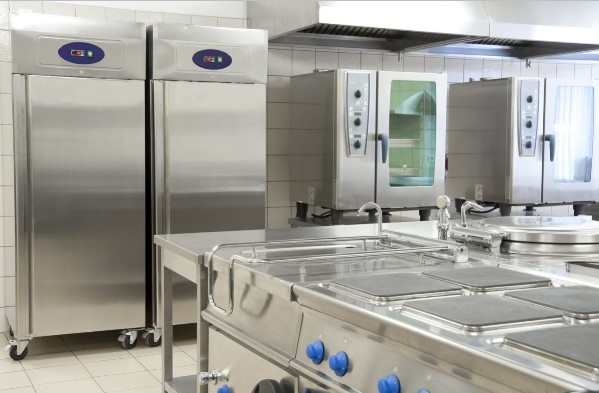
Main types of commercial property renovations
Depending on the purpose, reasons and scope of renovation of such premises, there can be several types of renovation:
- current repairs, which are of a cosmetic nature and do not fundamentally change the basic structural features of the premises. It mostly involves replacing old finishings with modern materials;
- major renovation, which envisages fundamental changes in the design of the premises, replacing internal communications, windows and doors. In the course of such renovation can be carried out partial redevelopment of the premises;
- authoring, which is a complex project of designers, artists, glass, stone and other high level specialists. The result is an impressive and exclusive interior design that is not only graceful and beautiful, but also highly functional.
As a rule, the repair of commercial premises is performed in stages. First, a design project is developed, followed by work on the laying of internal communications and roughing-up, after which the final decoration is done with the subsequent arrangement of office equipment and furniture.
The time between repairs for commercial properties should not exceed 5 years, allowing you to maintain a comfortable environment in such areas.
Repairs to commercial properties must be carried out quickly and preferably without interruption to the business.
How the renovation work is carried out?
The preparatory phase is followed by the actual building procedure. If the room is to be changed, dilapidated support structures, old finishes and interior elements must be removed. After the renovation, the room is cleaned of debris and the supporting structures and elements are rebuilt, relocated or new ones are erected.
Next, as the room is prepared, all elements of communication are replaced. This phase plays an important role in preserving future interiors. The reason for this is that if, for example, a pipe leaks or a wire burns out, the entire job could be undone. The next step is to carefully prepare all surfaces: align ceilings, walls and floors, and to finish the object.
In general, as far as commercial property renovation is concerned, it is handled by a team of qualified professionals, including architects, designers, engineers and builders. Therefore, when choosing a company, you should pay attention to the qualifications of the craftsmen, which guarantees the most effective implementation of the project in reality.
Stages of the transformation
Once a design and an estimate have been agreed upon, the client's role is to supervise the work. It can, in turn, be divided into the following stages:
- Removal of existing furniture and appliances. If the room is still empty, then the preparation will take much less time.
- Removal of previous coatings from all surfaces. Removal of construction waste.
- Redesigning. New partitions are usually made of plasterboard, although there may be other options, depending on client needs. If necessary, unnecessary walls are demolished, the main thing is to make sure that there is no load-bearing load on them.
- Laying of electrical wiring or repair of some failed elements. Repositioning of socket outlets and switches according to current requirements. Lighting is not fitted at this stage - it is their turn to be installed after the finishing works.
- Finishing work associated with the levelling of all surfaces and preparation for the subsequent application of finishing materials.
- Finishing with selected materials as well as installation of climate control and other types of necessary equipment.
All of these stages are related to major refurbishment. It is possible to carry out a cosmetic renovation - without affecting the main structures.
How to design a commercial interior?
For the most successful future operation of an existing office (club, shop, restaurant), you need to immerse yourself in the business idea, put yourself in the shoes of the buyer and translate his interests into the interior framework. You can use "gimmicks" or vice versa, eliminate distracting accents, create a calm background. A professional designer develops a special image of the space, its aura, an associative series or even a visual brand, which in future will be associated with your project and contribute to the commercial success.
Visitors remember something that pleases them, and if everything is done correctly, they will definitely come again to the restaurant, in the shop the customer will become a regular customer, in the office - a customer.
Of course, the business owner or organiser has his own view of how his office (shop, café, etc.) should look, but an expert must be involved in developing the idea and the best way to implement it.
Features of restaurant, cafe and bar refurbishment and decoration in Perth
It's no secret to any restaurateur that the interior of an establishment dances with the kitchen. When creating a unique atmosphere, it's important not to create a conflict between the food being served and the setting. Equally important is to remember who your guests are - a fast-food restaurant will be quite different from a high-end cafe or brutal sports bar.
For nationally inspired establishments, designers recommend eco- and ethno-style restaurant finishes. Natural fibre wallpaper, such as bamboo, cork, foliage and woven fabrics are ideal for walls. Venetian plaster will also do a good job of creating an eco-friendly interior. Flooring should preferably be maximally durable materials. Generally these are tiles, porcelain stoneware and laminate. A win-win ceiling finish is a stretch construction. It is excellent for mounting lighting fixtures and saves time on leveling the surface.
European kitchens are free in their choice of styles and materials. However, it is important not to miscalculate the colour palette. The bar can be finished in dark colours: burgundy, black, navy blue or green. The woodgrain finish looks good. The reception room can be decorated in warm colours that are appetite-enhancing. Lighter colours, dirty pink and purple, gold, silver and mother-of-pearl also look good - it all depends on the style you choose.
If the focus of your establishment is fast food, then go for bright colours. Combine red and yellow, green and orange, blue and pink, but still choose warm shades of these colours.
In the kitchen of absolutely any restaurant or cafe it is preferable to choose light shades of all surfaces - classic white, ivory, pastel, beige, cool blue, warm pink. Particular attention is paid to safety and comfort when selecting materials. No slippery flooring underfoot or difficult materials on walls and ceilings!





